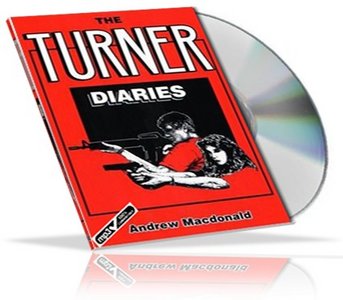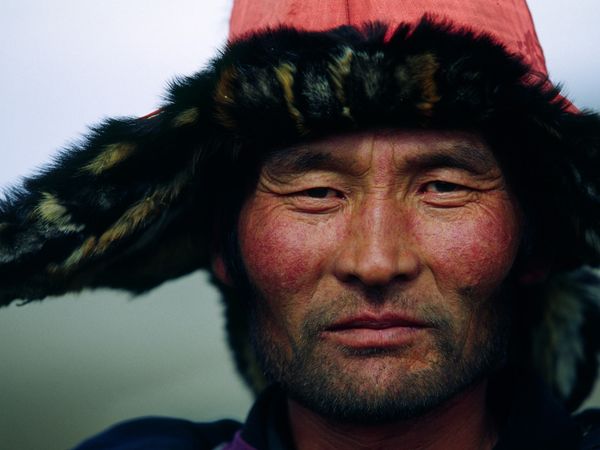Excerpted from the 21st article of William Pierce’s “Who We Are: a Series of Articles on the History of the White Race”:

Karl’s savagery reached a peak in the tenth year of the evangelism: in 782, at Verden on the Aller, with the blessing of the Church, he had 4,500 Saxon nobles beheaded. Twelve years later, in 794, he introduced a policy under which every third Saxon was uprooted from his land and forced to resettle among Franks or other Christianized tribes.
Fairly early in this campaign, in 777, one of the most prominent of the Saxon chieftains, Widukind, took shelter among the Danes and appealed to their king, Sigfred, for assistance against the Franks. Although the Danes were wary of becoming involved in a full-scale war against the formidable Karl, they and the other Northern peoples were put on their guard, and they became increasingly indignant over the Frankish suppression of the Saxons’ religion.
Karl’s brutal campaign against the Saxons undoubtedly helped raise a certain consciousness in the North of the spiritual and cultural differences which separated Scandinavia from those lands which had fallen under the yoke of the Christian Church.
Special Treatment
One manifestation of this consciousness was the erection of the Danevirke, an extensive system of defensive earthworks across the neck of the Danish peninsula, begun in 808.
Another was the special treatment which the Vikings customarily meted out to the Christian monks and priests who fell into their hands. The monasteries and churches, with their troves of treasure mulcted from superstitious citizens seeking to buy their way into heaven, were tempting targets to the raiders from the North anyway, but the element of revenge must have made them even more tempting, and it was for good reason that throughout the ninth century the daily prayer of every pious cleric was: A furore Normannorum libera nos, Domine! (“From the fury of the Northmen deliver us, Lord!”).
Genetic Effects of Monkery
Another interesting eugenic contrast between North and South is provided by the Christian practice of clerical celibacy. Although there were many periods during the Middle Ages in which violations were commonplace, as early as the fourth century the Church began insisting on total celibacy for the higher clergy. With the growing incidence of monasticism after the sixth century, a greatly increased portion of the population of Christian Europe was subjected to the rule of celibacy.
In the Middle Ages the clerical life was not, as is often the case today, simply a refuge for those who could succeed at nothing else; it was usually the only route to scholarship—and often the only route to literacy as well—and it attracted many able and intelligent men, whose genes were then lost to their race. For a thousand years, until the Reformation, there was a selective draining away of Christian Europe’s intellectual vitality.
A Mighty Hive
The high birthrate among the most active and energetic elements of the population in the Northern countries led to land-hunger and the drive for external conquests. In the words of 17th-century English statesman and writer Sir William Temple: “Each of these countries was like a mighty hive, which, by the vigor of propagation and health of climate, growing too full of people, threw out some new swarm at certain periods of time that took wing and sought out some new abode, expelling or subduing the old inhabitants and seating themselves in their rooms.” This state of affairs also held long before the Viking Age, of course.

In addition to the generalized effects of a high birthrate, two other consequences of polygyny which bore on the rise of Viking as a way of life were the large numbers of second, third, fourth, and later sons in the families of Norse landholders—sons left without inheritance and without land, unless they could wrest it away from someone else—and a shortage of women.
The most popular way to solve the latter problem was to go on a raid and carry off women from Ireland, England, or France, although there was also a heavy traffic in Slav slave girls from the Rus realms. The Hrafnsmál tells of life in Harald Fairhair’s court: “Glorious is their way of life, those warriors who play chess in Harald’s court. They are made rich with money and fine swords, with metal of Hunaland and girls from the east.”
Victory at Hafrsfjord
The political consolidation which began taking place in Scandinavia in the ninth century served as an especially strong impetus to Viking colonizers. As mentioned earlier, the Vikings were extremely individualistic, extremely resentful of any encroachments on their freedom of action. After Harald Fairhair won a great sea victory at Hafrsfjord over the Viking chieftains of western Norway in 872, many of them left Norway with their households and their followers and settled in Iceland and the smaller islands of the North Atlantic rather than submit to Harald’s rule.
A century later, political consolidation having been achieved, Scandinavian monarchs began to realize the policy advantages in bringing their people into the same religious camp as their neighbors to the south. The first to take the step was Denmark’s Harald Bluetooth, son of King Gorm the Old. In 965, 15 years after Gorm’s death, Harald allowed himself to be baptized, and then he undertook the forcible conversion of the rest of the Danes: a move which did not sit well with many and led to further emigration and turmoil in the North. It also led eventually to Harald’s deposition and banishment.
The Viking Way to Immortality
The heroic ethos, the core of the Viking attitude toward life, of which the high value placed on fidelity is but one aspect, is probably stated best in the oft-repeated lines from Grettir’s saga:
Cattle die, and kinsmen die,
And so one dies oneself.
One thing I know that never dies:
The fame of a dead man’s deeds.
To the Viking immortality was not gained by being baptized, going to Mass every Sunday, and being openhanded when the collection plate came around; the only way he knew to overcome the annihilation which awaits every man in the grave was to live his life in such a way that other men would remember him and esteem his memory. The individual consciousness must die, but the consciousness of the community, the tribe, and the race lives on; and, to the extent that the individual has entered that collective consciousness, he becomes immortal.
The Last Viking
The coming of Christianity to the Viking world eventually meant the end of that world, but it did not change the Viking ethos immediately, as is evidenced by the life of a man who was certainly one of the most remarkable of all the Vikings, and the last of the truly great ones: Harald Sigurdsson, who, after he became king of Norway, was also known as Harald Hardraada (Hard Ruler) and Harald the Ruthless.
His deeds are the subject of one of the most fascinating of the Viking sagas (King Harald’s Saga), which we would be inclined to dismiss as an unusually imaginative work of heroic fiction, were it not solidly confirmed by the historical record.
Christian Terror
Olaf, like Denmark’s Harald Bluetooth before him, was deposed and chased out of his country after attempting to impose Christianity on his countrymen against their will. For two years Olaf had waged a campaign of Christian terror, burning the farms of all Norwegians who would not bow to the Church of Rome. Many of the stubborn traditionalists who fell into his hands he maimed or blinded.
Finally his subjects revolted, and he was forced to flee to Russia. When he returned with an army, including his half-brother Harald, in 1030 he was defeated and killed, and the wounded, 15- year-old Harald became a fugitive.
Olaf, despised by the Norwegians, was immediately made a saint by the Church, and today he is the patron saint of Norwegian Christians.




